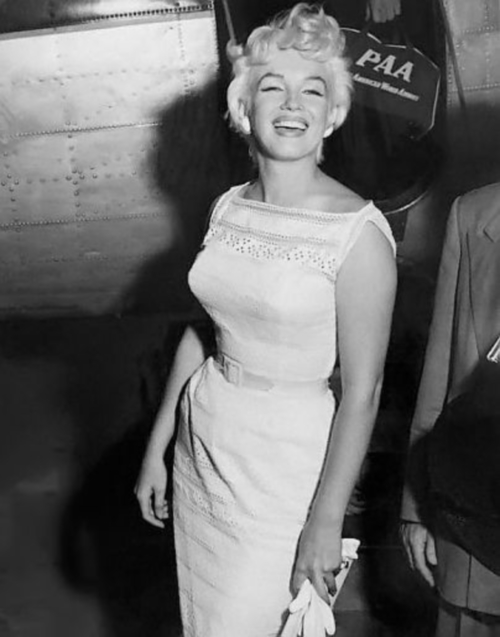Bombshell
The Night that Bobby Kennedy
Killed Marilyn Monroe
We Only Want Justice For Marilyn
Since you are reading this, I assume you have read the proclaimed to be non-fiction publication Bombshell: The Night Bobby Kennedy Killed Marilyn Monroe, jointly written by Michael Rothmiller and Douglas Thompson, hereafter Rotson; but even if you have not read Bombshell, the publication’s unsubtle sledgehammer title reveals the text’s fundamental subject and topic; but I must comment: it’s an oddity to me that Rotson decided to use the word killed in the book’s title instead of murdered.
Similarly, since you have discovered my Marilyn website, I assume you are a Marilyn Monroe fan. Perhaps not a devotee. Perhaps just a casual fan. Perhaps you know something about the contrived controversies surrounding her death. Perhaps you even know a few things about her life. Or, perhaps, you simply want to know if buying Bombshell is worth the investment of a few dollars and if reading Bombshell is worth the investment of a few hours. Perhaps you simply want to know if Bombshell is actually a bombshell. I suppose in a certain sense the main revelation presented in the book is moderately explosive and moderately shocking: a confession by Peter Lawford that he was present during the night of Saturday, August the 4th in 1962, when Robert Kennedy actually handed Marilyn Monroe a poisoned glass of water, actually murdered the world’s most famous blonde actress. She did not murder herself.
Why would Marilyn Monroe murder herself? Certainly a question that has been asked many thousands of times during the past sixty-one years and posed yet again on page eleven of Bombshell, posed as a way of asserting that Marilyn had no reason to take her own life; so, why, indeed?
She was, after all, the most famous female in the world, loved by millions of adoring men and even women. Beautiful and rich herself, she was continually pursued by the beautiful and the rich, continually pursued by the rich and the powerful. Over the passing years since Marilyn’s tragic death, many specific reasons have been deployed like weaponized arguments against Marilyn’s self murder. The authors of Bombshell did not offer a recitation of those reasons but offered instead several odd comments. Marilyn was the leading lady in a gothic fairy tale, for example, and the star’s traumatic life played like an afternoon soap opera, clearly a declaration that the movie star’s existence was nothing less than a lachrymose Victorian melodrama, which appears to contradict the assertion that Marilyn had no reason to commit self murder.
In 1960, Georges Belmont interviewed Marilyn for the French magazine, Marie Claire. Belmont wanted to know if Marilyn felt generally happy in life. Marilyn repeated Belmont’s question: Do I feel happy in life? Then after thinking briefly, she replied: Let’s say I hope I’m finding happiness. Right? She then explained how certain career accomplishments had provided some moments of happiness for her, before adding: But, I’m not just generally happy. If I’m generally anything I guess I’m generally miserable. After retreating into the penumbra of her incredible laugh, Marilyn admitted, as if appending a postscript: I don’t know. From the preceding comments, anyone paying attention would conclude that real and uninterrupted happiness for Marilyn was as elusive as a ringtail cat, that a person burdened by a general state of being miserable just might become extremely weary, fatigued by the misery, fatigued by being in a state of immutable and continual psychological pain. Certainly, suicide would have ended that continual misery. That salient possibility, we must conclude, then, eluded Rotson.
I have read Bombshell twice. I have virtually read Rothmiller’s initial publication twice. Initially published in 1992, in 2012, Rothmiller re-released L. A. Secret Police: Inside the LAPD Elite Spy Network as an eBook. Each publication presents a considerable amount of information regarding the Los Angeles Police Department, hereafter LAPD, and the Organized Crime Intelligence Division, hereafter OCID. I am not prepared nor equipped to contradict any of that information or refute any of the allegations leveled by Rothmiller. He worked in that environment; so he saw the OCID in action; he even participated in that action.
Beginning in 1972, at the age of twenty-one, Rothmiller joined the LAPD. In early May of 1978, he received what amounted to a double shot of advancement, rather like receiving a double shot of a fellow’s favorite single malt Scotch or two scoops of Rocky Road ice cream: the LAPD promoted Rothmiller to detective and simultaneously transferred him into an LAPD squad whose main purpose, it appeared on the surface anyway, was to combat organized crime and arrest gangsters: the Gangster Squad. Evidently, the Gangster Squad was just that: a squad of gangsters, a squad that committed more crimes than it actually solved, a squad that acted atrociously with malevolence and impunity under the OCID’s powerful and pugnacious canopy. Once again, I cannot refute any of the incredible allegations leveled by Rothmiller, not only against the LAPD and the OCID as entities purportedly dedicated to law enforcement, but also against the administrative hierarchy, up to and including the Chief of Police.
I have also dedicated a considerable amount of thought to how Marilyn has been presented in Bombshell, and many of Rotson’s assertions about her, primarily personal opinions regarding Marilyn’s personality, her promiscuity, her addictions and her psychological problems. Of course, Rotson repeats many of the often false and unsubstantiated, lurid rumors and tales about Marilyn’s relationships and interactions with the middle Kennedy brothers; and Rotson adds a few new ones as well. Before I end this commentary, I will denote several.
The reader is once again tantalized and titillated, of course, by constant allusions to sexual shenanigans proven by secret files, secret tape recordings and transcriptions of those recordings, and a secret sworn deposition that Robert Kennedy allegedly gave to the LAPD; and, yet again, Rotson invokes the specter of Marilyn’s infamous Little Red Diary. Rothmiller, like Robert Slatzer and Samir Muqaddin before him, presents what are alleged to be direct quotations from Marilyn’s Red Book of Secrets, all of which will appear later in this commentary.
Various and sundry authors have dedicated many words to all of the preceding; and I have dedicated many words to all of the preceding as well, in excess of 350,000 words. So, what should I write about all that? What should I repeat? Should I offer yet another item by item refutation based on historical facts? Well, I have decided against doing that. To engage in yet another line item refutation of essentially personal opinions and unsubstantiated anecdotes, as they relate to the purpose of this commentary, would not serve this commentary. That would be nothing less than clutter, in my opinion. Therefore, I am going to limit that clutter and the repetition as much as I can. Suffice it to say, personal opinions and rumors are not actual evidence, and the concept of evidence along with the axiom that proving extraordinary accusations requires presenting extraordinary evidence will appear again later.
With the preceding in mind, there are five sections to this commentary, or book review, if you prefer, which feature major topics that need to be discussed: 1) Gilroy California; 2) Marilyn’s Diary and Rashomon; 3) Marilyn’s Poisoning and Autopsy; and 4) Extraordinary Evidence. Perhaps a more precise title for the fourth section is, arguably, A Lack of Extraordinary Evidence; but I’ll refrain from using that title. The fifth section presents various topics as Some Final Words and Thoughts.






